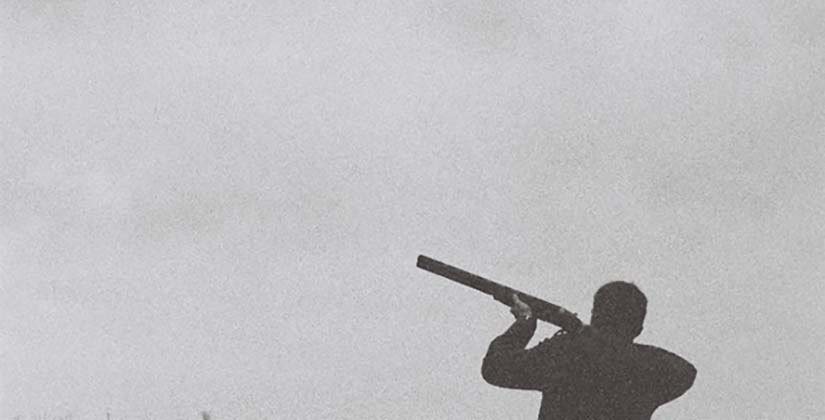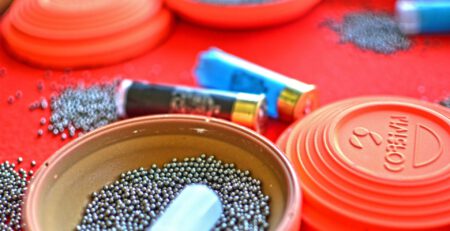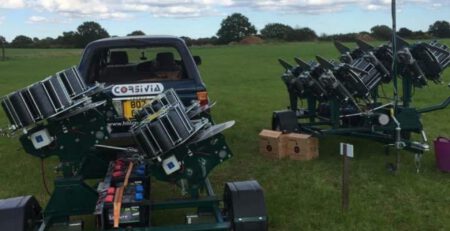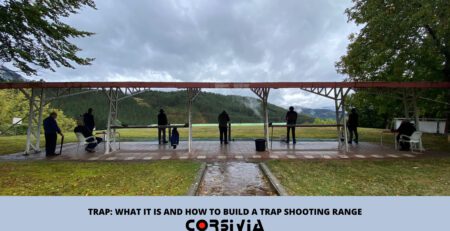The evolution in clay shooting sports
The older ones tell us that in Montes Blancos, Zaragoza, it was common to have shoots with 300 and 400 shotguns. There were queues of over 60 minutes to shoot a round…
…nowadays, the biggest shoots have about 150 / 175 shooters. On many weekends, the Spanish shooting ranges are almost empty, even on days when the sun doesn’t set until around 10 pm.
I have been involved in shooting now for seven years. Initially as a profession and now also as a hobby, I visit numerous shooting ranges, national and international, “small village” and “renowned” ones, with trenches and trails, created as a club or as a business.
In all of them a common denominator about the current situation of the sport can be seen. In short, “the sport of clay target shooting is in a vicious circle of continuous depression”. This “glorious” sport of the 80s and 90s is currently in free fall. Spanish clay target shooting lives on in the memories of the past.
There are several reasons why the sport of clay target shooting is on a downward trend
Although all of us who are part of the “shooting party” could blame each other for the current situation of the sport in Spain, the reasons for the current situation can be counted on the fingers of one hand, in particular,
- Reduced number of young people coming into the sport in recent years, as a result of which the current shooting population has aged slightly.
The future, at the moment, is no more promising, clay target shooting is not high on the list of favourite sports of youngsters nowadays.
- The poor image of weapons and their associated sports, and none of us involved in the sector have done anything to improve our position in society.
- The economic crisis prevailing in the country, as a result of which many shooters have abandoned their shotguns.
Shotguns are “abandoned”, licences are lost… in short, shooters are unlikely to return to the ranges.
- Constant closures of shooting ranges in the country, for various reasons:
o The management model of a high percentage of shooting ranges is “amateur”. Very often, the range manager acts on a voluntary basis, the range is part of his leisure time. The range is their hobby. These ranges, managed in someone’s free time, are constantly disappearing as the manager decides to “retire”.
o In addition, non-compliance with some of the legal requirements demanded of shooting ranges or social pressure from the environment is another reason why shooting ranges “lock their gates”.
- A minimally structured sector / sport, in some situations divided. As the saying goes “it never rains but it pours”
The sector, both at sporting, business and federative level, is dispersed with no strategic plan for the future… which creates a cocktails that continues to add to the “deconfiguration” of the sport of clay target shooting.
Let’s face it, the world of clay target shooting is characterised by a downward spiral.
With a view to the future, two alternatives for the development of clay target shooting can be identified.
In this context, and looking to the future, we could draw two possible scenarios for target shooting.
- A “Status Quo” scenario, let’s carry on as we are!!! Let’s do nothing!!!
And then, what might happen?
Even if it means playing a being a futurist, one senses…
- That the sport would remain a residual sport in Spain, with an ageing shooting population. In the worst case scenario, I wouldn’t rule out that clay target shooting could eventually disappear from our country.
- Many of the “village” shooting ranges and casual shoots (remember that both of these are the cradle of the sport) would disappear completely. In Spain there might possible only be 3 / 4 “large” shooting ranges that would gradually have to look for alternative activities and income to clay target shooting. Shooting might not generate enough income to sustain them.
- With regard to the associated industry, (shotgun makers, cartridge makers, silversmiths, shooting ranges, associated hospitality, media, gunsmiths, dealers, …) they will gradually disappear and consequently the economic impact (both nationally and internationally) associated with this industry will be lost.
- The industries that manage to survive, would “stick together” for a smaller and smaller piece of the pie, that would become more and more depleted. Manufacturers, gunsmiths and dealers, “would scratch each other’s eyes out”, to compete on price and innovation would be non-existent in the sector.
- Logically, the gradual disappearance of the sport and its sporting disciplines will cause a progressive decline / disappearance of federative institutions / similar agents.
In short, even if this futuristic diagnosis were only 25% true, the “status quo” is not acceptable. It would mean the death of the sport.
If nothing is done, a “black” future is looming ahead of us, in which, in the medium term, the sport of clay target shooting (and everything that goes with it) will be part of the history books. Just as the sports of the Romans are today.
- On the other hand, we could tackle the current situation and all the agents involved could build a future for the sport of clay target shooting.
It is simply a need for survival, the hope for things to improve. We need to take measures to minimise the current “structural crisis” in which our sport finds itself.
All the agents that form part of this “circus” see the need for change, and some also see the windows of opportunity that clay target shooting is currently offering.
And this is how, motivated by both the responsibility of the moment and by the opportunity for improvement offered by the sport, manufacturers, dealers, sports technicians, clubs and the media, we should work together to “re-energise” the sector that “feeds us”.
I suggest creating a “participative working group to promote and develop clay target shooting”. A group that deploys actions that give new impetus to the world of shotgun shooting.
An association of companies that would create a different approach to the world of shooting, generating, firstly, a leisure alternative for the shooter and his environment, in which clay target shooting would be the backbone and, secondly, a positive economic impact for the industries that depend on this sport.
It would not be a question of substituting or absorbing any of the existing institutions (business associations, federations, hunting societies, etc.), but of providing a joint and integral response to the strengths and weaknesses that target shooting offers.
We could develop a collaborative project in which any agent hopeful of building a better future would have a place. In the future, the success of clay target shooting, in any of its disciplines, lies in the concurrence and interaction, in the same place and time, of different ideas and profiles; from both the world of industry and sportsmen and women, federations, public authorities, clubs and shooting ranges.
It would be about building an institution with the need to work “for and on behalf of” all the clay target shooting disciplines (with particular emphasis on the most popular ones), in a collaborative way with all the different levels and striving for self-financing of their activities.
It’s as simple as that, let’s try, among all the agents involved in clay target shooting, to promote it to reach a higher level of development of the sport, at least similar to that reached in the 80s and 90s. It is our duty and our goal.
PROPOSAL FOR MEASURES OF IMPROVEMENT
In order to make progress in this area, we believe that a series of improvement measures should be implemented based on the following lines of action:
- Create plans to attract new customers and draw them into the sport.
- Create an amateur circuit independent of the Federations, but with a consensus on the national and international calendar.
- Improve the facilities and turn them into social clubs with shooting as the common thread.
- Additionally, structure the sector / grouping of the agents involved, helping the defence of their interests.
- Innovative activities promoting the sport.
The main areas on which to focus these improvements would be:
- Opening up the sport and training in shooting disciplines. Advising and reducing the procedures to get started in this sport, producing media campaigns and creating shooting schools.
- Recreation and sports practice for all categories. Creating group training plans, championships different from the existing ones, recovering the tradition of village shooting or creating virtual communities of shooters.
- Development of infrastructures and the current sporting offer. Providing legal advice for shooting ranges, improving the management model of the facilities, improving infrastructures and establishing a model of national and international inter-club exchanges, incorporating complementary agents such as travel agencies and catering companies.













